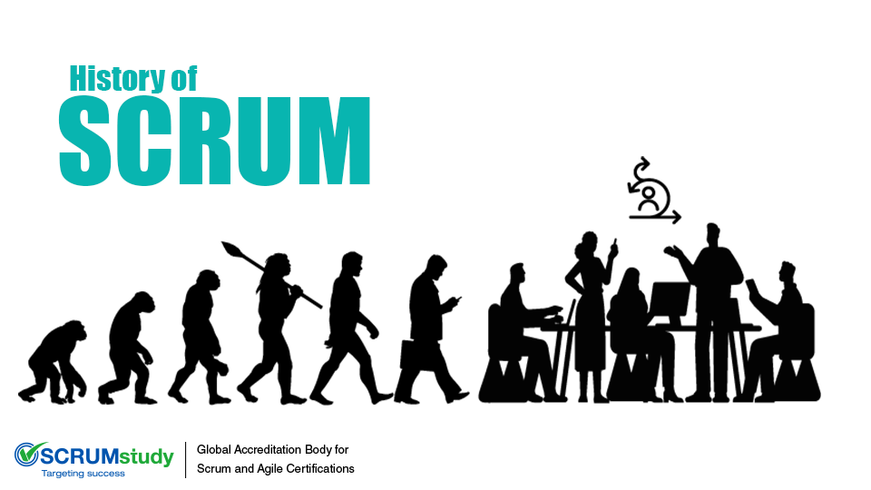
The Scrum framework had its inception in the 1980s. In the mid 80’s, Hirotaka Takeuchi and Ikujiro Nonaka defined a flexible and all-inclusive product development strategy where the development team works as a unit to reach a common goal. They described an innovative approach to product development that they called a holistic or “rugby” approach, “where a team tries to go the distance as a unit, passing the ball back and forth.” They based their approach on manufacturing case studies from various industries. Takeuchi and Nonaka proposed that product development should not be like a sequential relay race, but rather should be analogous to the game of rugby where the team works together, passing the ball back and forth as they move as a unit down the field. The rugby concept of a “Scrum” (where a group of players form together to restart the game) was introduced in this article to describe the authors’ proposal that product development should involve “moving the Scrum downfield”.
The Evolution and Impact of the SBOK® Guide
Since then, several Scrum practitioners, experts, and authors have continued to refine the Scrum conceptualization and framework based on best practices. A major milestone in the Scrum journey was the creation of the original version of the SBOK® Guide in 2013. Over time, the SBOK® Guide has been continuously improved based on reviews and feedback provided by several thousand Scrum and Agile practitioners, including 5000+ faculty in 110+ countries who teach Scrum and Agile practices using the SBOK® Guide framework. This fourth edition is the product of further refinements that ensure the SBOK® Guide continues to remain valid and relevant in an ever-changing world.
Today, the SBOK® Guide is the established standard for companies and practitioners worldwide who are implementing Scrum or Agile practices. Scrum has become the project development approach of choice for many of the transnational organizations all over the world and its popularity has increased over the following years. The SBOK® Guide has been translated into Spanish, Portuguese, French, Italian, Arabic, Chinese, and Japanese to the application and use across multinational settings. To learn more about how to access translated editions, view the SBOK® source here.
Please visit : www.scrumstudy.com.
